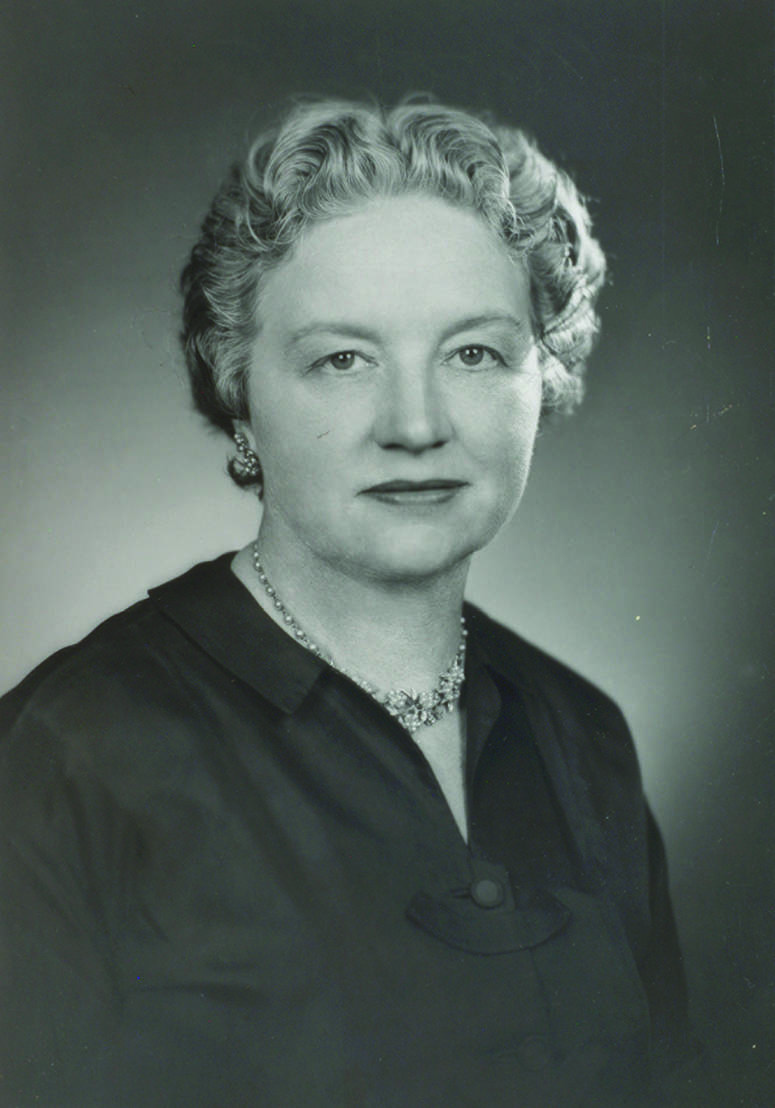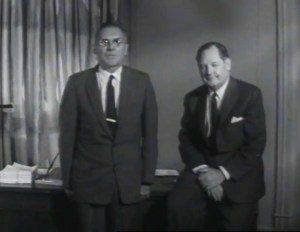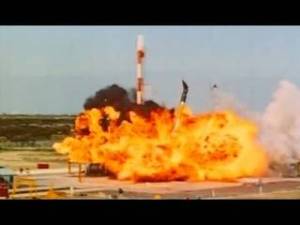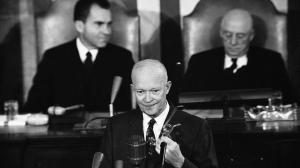Editor’s note: Dr. Eilene Galloway, often called “the grand matriarch of space law,” played vital roles in the drafting of NASA’s founding legislation while working for Sen. Lyndon Johnson (D-Texas). She also worked to create the United Nations Committee on the Peaceful Uses of Outer Space (COPUOS). In this essay, written in August 2007 for NASA’s 50th anniversary, Galloway tells how, as a congressional researcher, she came to work for Johnson and helped him bring NASA into existence.
The orbiting of Sputnik by the Soviet Union on Oct. 4, 1957 created worldwide fear of weapons of mass destruction. Lyndon B. Johnson, (LBJ), D-Texas, who was then-chairman of the Senate Preparedness Investigation Subcommittee of the Senate Armed Services Committee, worried that the Soviet Union was surpassing the United States in missile technology. He decided to hold hearings on how to cope with the problem. He telephoned me to request my assistance with the investigation. I was National Defense Analyst and later Senior Specialist in International Relations (National Defense) with the Legislative Reference Service of the Library of Congress.
LBJ, was familiar with my report on “Guided Missiles in Foreign Countries,” which had recently been published by the House of Representatives, as well as my work on military manpower and the organization of the Defense Department. Congress’ Legislative Research Service (now the Congressional Research Service) asked for my help with the upcoming hearings.
On Nov. 3, 1957 the Soviet Union launched a second heavier Sputnik carrying a dog, Laika “Barker,” evidence of an advanced capability to use the outer space environment. As satellites circled the earth in 90 minutes, nations were united in fear.
On Nov. 25, 1957, LBJ began the “Inquiry into Satellite and Missile Programs.” The initial assumption was that we faced a military problem. By Jan. 23, 1958, we had recorded 1,377 pages of testimony by preparedness experts. But it was the testimony of scientists and engineers from many sectors, including the International Geophysical Year (IGY) that helped change our perception of the problem. These witnesses discussed the important practical applications of space that NASA could facilitate, including long-term meteorological forecasts and rapid long-range radio communications. The exploration of Mars and Venus was foreseen. Manned satellites were predicted, even the landing of a man on the moon and his safe return to Earth. The solution to the problem of opening the outer space environment would have been incomplete without the input of scientists and engineers.
While our first reaction was that we faced a military problem of technology inferiority, the testimony from scientists and engineers convinced us that outer space had been opened as a new environment and that it could be used worldwide for peaceful uses of benefit to all humankind, for communications, navigation, meteorology and other purposes. Use of space was not confined to military activities. It was remarkable that this possibility became evident so soon after Sputnik and its significance cannot be understated. The problem became one of maintaining peace rather than preparing the United States to meet the threat of using outer space for war. Fear of war changed to hope for peace.
My contributions to the formation of NASA, which followed nine months after Sputnik were [1] recommending that NASA be an administration instead of an agency; and, [2] providing NASA international authority under section 205 of the Space Act. In April, 1958, President Eisenhower sent the text of the proposed bill creating the National Aeronautics and Space Agency to House majority leader John McCormack, D-Mass., who subsequently sought my advice. The orginial draft bill’s assumption was that a total U.S. space program could result from dividing projects between agencies. The bill’s language declared that the agencies should voluntarily cooperate with each other, thus providing no provision for an overall coordinating mechanism. I told Congressman McCormack, “I did not like the institution to be called an agency with a director, because the organization of U.S. space activities required the coordination and cooperation of a number of agencies in the federal government, and NASA needed enough stature to work effectively with them to coordinate space projects.” Mr. McCormack replied, “But we have already started calling it NASA.” I then said, “We could call it an ‘administration’ with an ‘administrator.’” He rang for a secretary and said, “Change this bill, and change ‘agency’ and ‘director’ to ‘administration’ and ‘administrator.’” I believe creating NASA as an administration was the best solution to the problem of coordinating under centralized guidance the programs of the new space institution and other executive agencies already engaged in space-related activities. NASA later identified to the Congress those organizations having a role in space activities. The list illustrates why it was so important that NASA become an administration.1
When the bill came to the Senate Special Committee on Space and Astronautics, chaired by LBJ, the “administration” status of NASA was approved. Just before the committee adjourned, however, Sen. Theodore Green, D-R.I., chairman of the Senate Foreign Relations Committee, said NASA’s international agreements must be approved “by and with the advice and consent of the Senate.” I told LBJ that such a requirement would hamper NASA’s authority to make international agreements. The United States has a variety of methods for accomplishing its international cooperation objectives including treaties, executive agreements, agency-to-agency agreements, memoranda of understanding and letter agreements. It would have been counterproductive to restrict the means by which the agreed goal could be reached. LBJ gave me permission to discuss the matter with the State Department. This resulted in President Eisenhower’s adding to the law by a signing statement. The president stated, “I regard this section merely as recognizing that international treaties may be made in this field, and as not precluding, in appropriate cases, less formal arrangements for cooperation …” Therefore, NASA retained its authority to conduct programs of international cooperation by using less formal arrangements under the foreign policy guidance of the president. Among the earliest agreements were those covering tracking and telemetry stations, data from satellites and probes, exchange of scientific and technical information, training programs and exchanges with foreign scientists.
Another important aspect of our national response involved coordination with other nations. In a remarkable show of bipartisan and executive-legislative branch unity, Eisenhower invited LBJ, who was the Senate’s Democratic leader, to go to the United Nations to propose the creation of the Committee on the Peaceful Uses of Outer Space (COPUOS) with its Legal Subcommittee and the Scientific and Technical Subcommittee. I happened to be in San Antonio attending a space conference and was invited to the Johnson ranch to assist with the U.N. speech and accompany the LBJ staff to the U.N. The role of COPUOS was to safeguard the right of people of all nations to beneficial results from space exploration by providing assistance for research, exchange and dissemination of information, encouraging national research programs and studying legal problems arising from space exploration. Both fear and hope brought countries together in cooperation.
LBJ addressed the U.N. Committee, in November 1958, on behalf of the president. He said the following:
“Today outer space is free. It is unscarred by conflict. It must remain this way … We know the gains of cooperation. We know the losses of failure to cooperate … Men who have worked together to reach the stars are not likely to descend together into the depths of war and desolation.”
Initially, the Soviet Union, Czechoslovakia and Poland refused to participate in COPUOS which was created as an ad hoc committee based on majority voting. However, they became members a year later when it was decided that all COPUOS decisions would be made by consensus. COPUOS developed a number of space law treaties, including the “Treaty on Principles Governing the Activities of States in the Exploration and Use of Outer Space, including the Moon and Other Celestial Bodies,” which recognized “the common interest of all mankind in the progress of the exploration and use of outer space for peaceful purposes.” Although consensus decision making takes time, it provides a very strong basis for the signatory nations to comply with the treaties.
In 1957, space law was a newly emerging field which applies both to outer space as a geographic area and to functions performed in that environment. I like to think of it as encompassing legal problems arising from the exploration and particularly, uses of outer space. In August 1958, I attended a Space Law Colloquium at the Hague in the Netherlands. My paper, “The Community of Law and Science,” presented the argument that the development of science and law is interdependent. Legal problems must be studied in conjunction with the developing facts of science and technology. I observed it is a large order to expect any person or group to consolidate theory and practice in the new dimension created by space exploration; but unless we start with a total objective and a concept of how it is to be pursued, our interplanetary thinking will be earthbound by tradition and precedent at a time when creative predictions should enable us to keep international law in pace with scientific achievement. Together, these professions have the same objective — the creation of conditions that will promote the general welfare and protect the people in the “right to life, liberty and the pursuit of happiness.”
Upon my return to Washington after the creation of the COPUOS committee, and upon my suggestion to LBJ, the Senate Special Committee on Space and Astronautics published a space law symposium in December 1958. This document included 58 articles by lawyers, scientists, engineers and government officials identifying problems of air, sea and space law.
In looking back on those early accomplishments, I am awed by the speed of the legislative process. It was incredible and thorough. Sputnik was launched on Oct. 4, 1957, and by July 29, 1958 — approximately nine months later—the Congress had already identified all aspects of the problem taking into account the executive and legislative functions, national and international elements, and military and civilian roles and established NASA. NASA’s organic statute provided a solid basis for the space administration’s future success and United States technological leadership. The United States took the initiative, and five months later the U.N. created COPUOS. Space exploration became the beacon for our hope, the symbol of national and international achievement, and now we celebrate 50 years of progress and peace.
[1] The entities listed by NASA as having space-related activities included: The president, President’s Scientific Advisory Committee, National Aeronautics and Space Council, National Science Foundation, Atomic Energy Commission, U.S. Information Agency, Smithsonian Institution, Federal Aviation Administration, National Academy of Sciences, Civil Aeronautics Board, Department of State, Department of the Treasury, Coast Guard, Department of Commerce, Bureau of National Standards, Weather Bureau, Department of Defense, Advanced Research Project Agency, Air Force, Navy and Army.

































